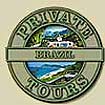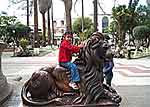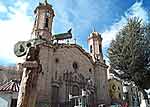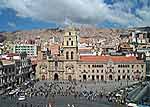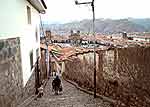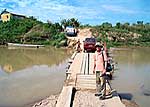GENERAL
INFORMATION |
||
|
![]()
|
Bolivia and Peru This trip starts in Corumbá where we can have a 3 days Pantanal Tour. The train ride to Santa Cruz de la Sierra and a bus drive to Sucre will take 2 more days. Sucre, the political Capital of Bolivia with a colonial atmosphere will help for acclimatization. Potosi, the world's highest city at 4070 m high can cause some altitude problems. Next destinations are Uyuni, San Pedro de Atacama (Chile), Antofagasta a former Bolivian gate to the Pacific ocean - The Museo Regional has an excellent documentation of that period when Bolivia experienced the "Golden Days" of salt export - Oruro, Cochabamba -considered an university city - and La Paz, base for several side trips. Copacabana at Titicaca Lake, close to the Peruvian boarder is the right place to overnight. From Puno (Peru) we leave for the Taquille Island and Uros floating community and there on to Cuzco, another good base for some day trips. One of the highlights of this trip is to go down from the Andes to the Amazon basin, a 500 km tiring, interesting and memorable journey to Puerto Maldonado, and from there to Iñapari / Assis Brasil - boarder with Brasil- then from Rio Branco, the capital of Acre State for your next destination or flight carrying with us good memories of this trip. Inaugurated on July 15th 2011, the "Transoceanica Road" is a 711 km scenic paved road which connects Assis Brasil to Cusco and on to the Pacific Ocean. It should be considered now, the most interesting and exciting entrance -or exit- gate to Peru by surface. |
|||||||||||||||||||
|
|
||||||||||||||||||
| Sucre Founded in 1538, Bolivia's Independence was declared here in 1825, Sucre is an interesting small city in a valley at 2790 m high appropriate for acclimatization before leaving for Potosi. There are many Museums and Churches. A visit to the local market where several spices can be admired and tasted is worth to make. |
Potosi
At 4070 m above sea level, Potosi has many interesting spots to see: The Casa de la Moneda supplied most silver coins worldwide in the past, the mines at Cerro Rico (we may need to take sorojchi pills due to the altitude and physical efforts) should be visited with a local guide and operator. Everywhere vendors sell fresh pressed grape fruit juice. |
||||||||||||||||||
|
|
||||||||||||||||||
|
Uyuni
and San Pedro de Atacama
Uyuni (3600 m high) is a small city beside a salt desert and has an interesting open air Train Museum and is the departure point to the Salar de Uyuni on the way to Atacama. On a 3 days trip with all in, we can see a Salt made Hotel, the "Isla de Pescadores" with giant cactus and a breathaway taking view over the Salar, a lonely traveler, Geysers, hot water bath, and much more... until we arrive at San Pedro de Atacama. |
La
Paz, Copacabana, Puno La Paz is a good base for day trips as well. Tiwanaku, Valle da Luna, hiking, shopping and just walking around are good options. Going down the Cordillera Real passing La Cumbre is a fantastic adventure. Copacabana (not in Rio de Janeiro !) at Titicaca Lake is a good option for spending a day and overnight on the way to Puno where a visit to the Uros floating community and Isla Taquille can be done prior leaving for Cuzco. |
||||||||||||||||||
|
|
||||||||||||||||||
| Cuzco, Puerto
Maldonado Cuzco deserves a longer stay to see all corners and artists working and producing crafts. Machu Picchu is a must of course, but the route to Puerto Maldonado descending the Cordillera de Carabaya is an experience that shows how the climate and flora changes from the Andes to the Amazon basin along 500 km of a former dangerous dirt road, sometime impassable. |
Assis
Brasil and Rio Branco At Maldonado it is worth to go to the "Colpa de Guacamayos" where macaws lick the clay every day in the morning. It is a 8 hours boat trip and with some burocracy to get a permission to enter the Reserva Nacional Tambopata and overnight there. From Maldonado we leave for Iñapari, cross the Acre River to reach Assis Brasil where good accommodations can be found and then to Rio Branco for one day to visit Mr. Aragão who shows and teaches how to handle latex. |
||||||||||||||||||
Pedro Novak - Private Tours - Rio de Janeiro
